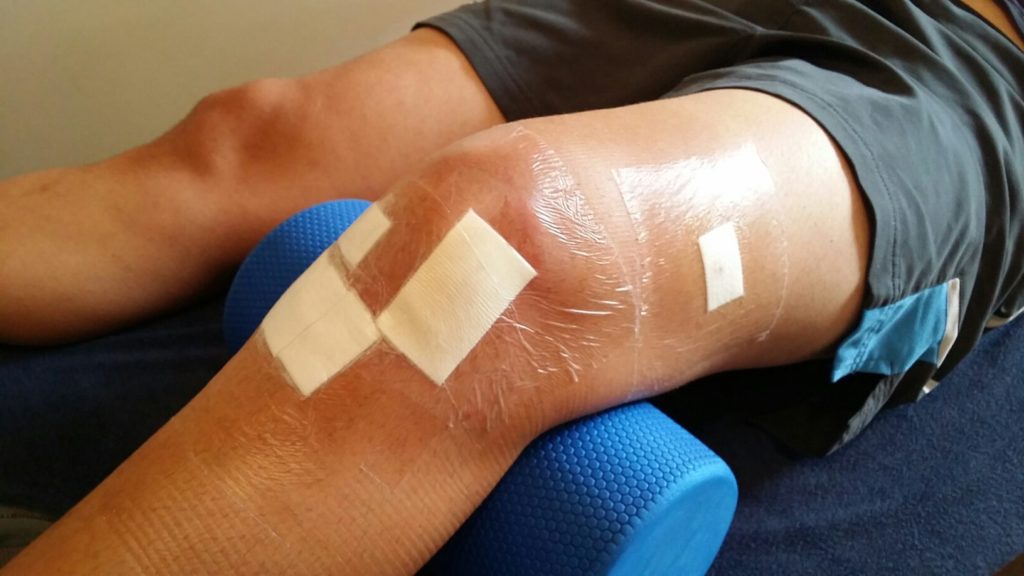ACL reconstruction is one of the most common surgical procedures performed on the injured knee.
The anterior cruciate ligament (ACL) is one of the four major stabilising ligaments of the knee. Its anatomical attachments allow it to resist anterior translation and internal rotation of the tibia (shin bone), in relation to the femur (thigh bone), stabilising the knee when turning or planting.
ACL tears are one of the most common knee injuries. Most are a result of landing or planting in cutting or pivoting sports, with or without contact.
Although surgical repair is not the only option, if a complete tear is diagnosed an ACL reconstruction is often recommended. Our physiotherapists have a well learned understanding in the options available to patients in the management of ACL injuries and can assist in the decision making process.
What is an ACL reconstuction?
An ACL reconstruction is one of the most common surgical procedures performed on the injured knee.
The ACL is an intraarticular (within the joint) ligament, and as such heals poorly. For this reason, it is almost always reconstructed with a substitute ligament, rather than being repaired.
There remains disagreement as to which tissue graft best reproduces the internal stability of the knee. There is currently no gold standard method of grafting recognised by research literature. The most common are:
• Hamstring tendon graft: a strip of accessory hamstring tendon on the inner aspect of the lower thigh is removed and folded over for strengthening. It is then fixated with screws within holes drilled in the tibia and femur. Click here to view a 3D ACL reconstruction animation using a hamstring graft.
• Synthetic graft (LARS reconstruction): an industrial strength polyester woven fibre is grafted arthroscopically without the further invasive harvesting of tissue from other parts of the body. It boasts quicker recovery times as well as less pain, swelling and restriction. However, it is yet to be validated with evidence from the literature.
At the time of surgery, the ruptured ACL is removed and the graft is placed anatomically and held with screws and occasionally a staple.
How can ACL reconstruction help?
The rationale for surgery is to stabilise an unstable joint, or a potentially unstable joint. Joint stabilisation has been shown to decrease meniscal and articular cartilage injury. This should, in turn, decrease the incidence of later osteoarthritic change. It will also allow return to activities that were difficult secondary to joint instability.
Is physiotherapy required before ACL reconstruction?
Ideally before you have an ACL reconstruction pre-habilitation should be carried out under the guidance of one of our physiotherapists. This will allow improved strength and flexibility of your knee leading into the surgery and ultimately a quicker and better post-operative result.
How long will it take to recover?
Unless instructed otherwise, patients can bear as much weight on the leg as comfort allows immediately after the surgery. Crutches may be used for comfort where necessary, and are usually required for 2-3 days. Most people are walking reasonably comfortably by 2 weeks. It is important not to over-exert too early after the procedure as this can increase discomfort and swelling. Other activities can be gradually reintroduced within ones level of comfort. Driving is allowed as soon as safe to do so. People with desk jobs can return to work as early as 1-2 days, while people in more heavy manual employment may require 6 weeks.
The rehabilitation program runs over a 6-12 month period prior to returning to competitive sports or unrestricted activity.
Is physiotherapy required after ACL reconstruction?
Yes. Our physiotherapists will play a large role from the early stages post-operatively. Rehabilitation following ACL reconstruction is an essential part of full recovery. We will be able to guide you through your rehabilitation and tailor guidelines to your abilities and needs as you progress. The end stages of rehabilitation are when important decisions on return to sport are made. These are determined by clinical examination techniques that are high predictors of re-‐injury risk. This maximises the chances of a successful return to sport and activity.
All rehabilitation programs are flexible. Individual progress varies greatly, and this will require some modifications of the program at the discretion of the physiotherapist.
What are the risks?
ACL reconstruction is a very safe procedure. The most common side effect of ACL reconstruction is temporary discomfort or slight bruising. Due to the skin incision patients may notice a numb patch on the outer aspect of their leg past the skin incision. This is of no functional significance and is unavoidable. The numb patch tends to shrink with the passage of time and does not affect the result of the reconstructed ligament.
Graft failure due to poorly understood biologic reasons occurs in approximately 1% of grafts.
As with all operations if at any stage anything seems amiss it is better to call up for advice rather than wait and worry.
For more information regarding ACL reconstructions or the rehabilitation involved before or after surgery contact one of the physiotherapists at Jubilee Sports Physiotherapy.























